
In art history, literature and cultural studies, Orientalism is the imitation or depiction of aspects of the Eastern world by writers, designers, and artists from the Western world. Orientalist painting, particularly of the Middle East, was one of the many specialties of 19th-century academic art, and Western literature was influenced by a similar interest in Oriental themes.
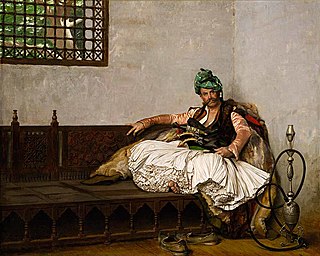
A bashi-bazouk was an irregular soldier of the Ottoman army, raised in times of war. The army chiefly enlisted Albanians and Circassians as bashi-bazouks, but recruits came from all ethnic groups of the Ottoman Empire, including slaves from Europe or Africa. Bashi-bazouks had a reputation for being undisciplined and brutal, notorious for looting and preying on civilians as a result of a lack of regulation and of the expectation that they would support themselves off the land.

Jean-Léon Gérôme was a French painter and sculptor in the style now known as academicism. His paintings were so widely reproduced that he was "arguably the world's most famous living artist by 1880." His range of his works includes historical paintings, Greek mythology, Orientalism, portraits, and other subjects. He is considered one of the most important painters from this academic period. He was also a teacher with a long list of students.

Dolmabahçe Palace located in the Beşiktaş district of Istanbul, Turkey, on the European coast of the Bosporus strait, served as the main administrative center of the Ottoman Empire from 1856 to 1887 and from 1909 to 1922.
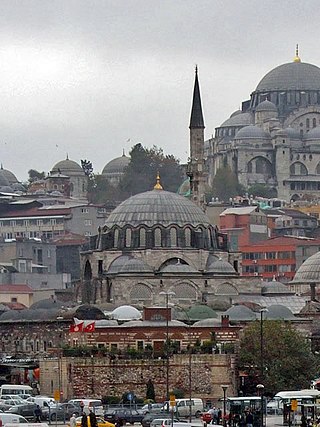
The Rüstem Pasha Mosque is an Ottoman mosque located in the Hasırcılar Çarşısı in the Tahtakale neighborhood of the Fatih district of Istanbul, Turkey, near the Spice Bazaar. Named after Rüstem Pasha, who served as Grand Vizier of the Ottoman Empire under Sultan Suleiman I, it was designed by the Ottoman imperial architect Mimar Sinan and completed in around 1563.
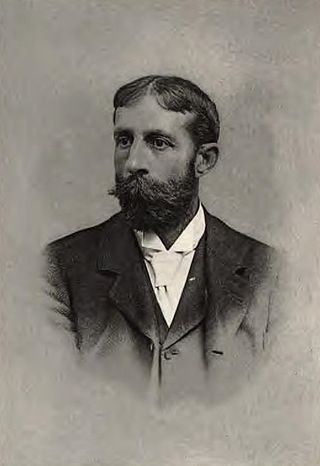
Edwin Lord Weeks (1849–1903) was an American artist, noted for his Orientalist works.

Frederick Arthur Bridgman was an American artist known for his paintings of "Orientalist" subjects.
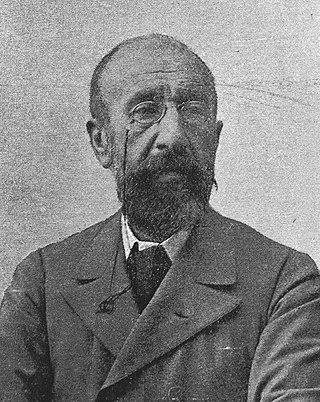
Osman Hamdi Bey was an Ottoman administrator, intellectual, art expert and also a prominent and pioneering painter. He was the Ottoman Empire's first modern archaeologist, and is regarded as the founding father of both archaeology and the museum curator's professions in Turkey. He was the founder of Istanbul Archaeology Museums and of the Istanbul Academy of Fine Arts known today as the Mimar Sinan Fine Arts University. He was also the first mayor of Kadıköy.
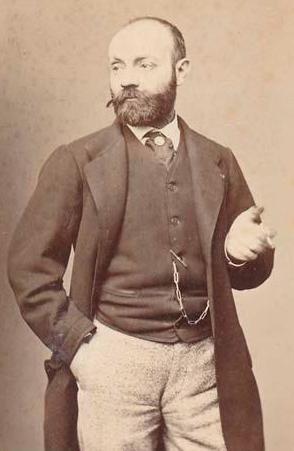
Gustave Clarence Rodolphe Boulanger was a French figurative painter and academic artist and teacher known for his Classical and Orientalist subjects.

Ahmed Ali Pasha, better known as "Şeker" Ahmed Pasha, was an Ottoman painter, soldier and government official. His nickname "Şeker" meant "sugar" in Turkish, which he earned due to his very easy-going nature.

Jean-Jules-Antoine Lecomte du Nouÿ was an Orientalist French painter and sculptor. He was strongly influenced by the works and teachings of Charles Gleyre and Jean-Léon Gérôme. Lecomte du Nouÿ found inspiration for his art through extensive travels to Greece, Turkey, Egypt, Romania and Italy. The thematic content of Lecomte du Nouÿ's work was mainly figural, but also spanned over a vast range of imagery throughout his career, including classical, historical and religious.

İznik is a municipality and district of Bursa Province, Turkey. Its area is 753 km2, and its population is 44,236 (2022). The town is at the site of the ancient Greek city of Nicaea, from which the modern name derives. The town lies in a fertile basin at the eastern end of Lake İznik, with ranges of hills to the north and south. As the crow flies, the town is only 90 kilometres southeast of Istanbul but by road it is 200 km around the Gulf of İzmit. It is 80 km by road from Bursa.
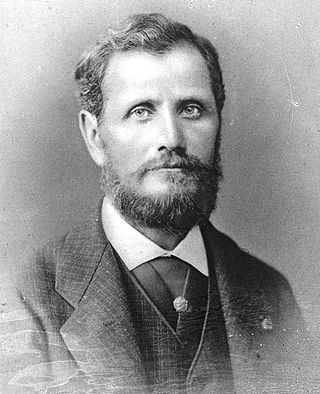
Stanisław Chlebowski (1835–1884) was a Polish painter. He was a renowned specialist in Oriental themes and history painting.
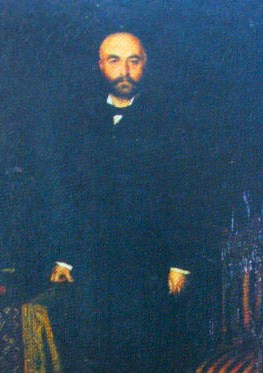
Sarkis Diranian was an Armenian orientalist painter. Originally from the Ottoman Empire, he was established for many years in Paris.

The Snake Charmer is an oil-on-canvas Orientalist painting by French artist Jean-Léon Gérôme produced around 1879. After it was used on the cover of Edward Said's book Orientalism in 1978, the work "attained a level of notoriety matched by few Orientalist paintings," as it became a lightning-rod for criticism of Orientalism in general and Orientalist painting in particular, although Said himself does not mention the painting in his book. It is in the collection of the Sterling and Francine Clark Art Institute, which also owns another controversial Gérôme painting, The Slave Market.
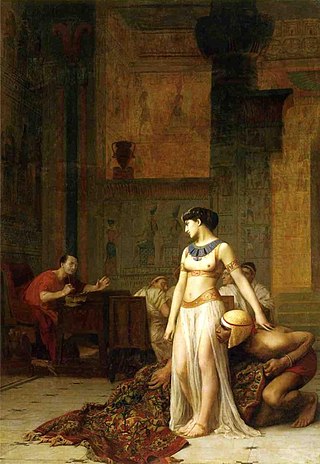
Cleopatra and Caesar, also known as Cleopatra Before Caesar, is an oil-on-canvas painting by the French Academic artist Jean-Léon Gérôme, completed in 1866. The work was originally commissioned by the French courtesan La Païva, but she was unhappy with the finished painting and returned it to Gérôme. It was exhibited at the Salon of 1866 and the Royal Academy of Arts in 1871.

La Vérité sortant du puits armée de son martinet pour châtier l'humanité is an 1896 painting by the French artist Jean-Léon Gérôme.
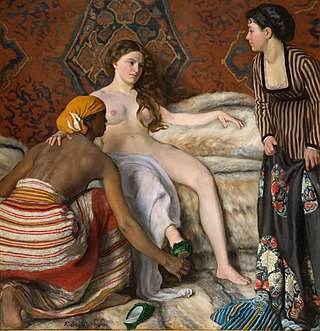
La Toilette is an oil-on-canvas painting by the 19th century French impressionist artist Frédéric Bazille, executed in 1869–1870, which has been in the collection of the Musée Fabre in Montpellier, France since 1968. He produced it a few months before his death in the Franco-Prussian War in 1870.

Bashi-Bazouk is a painting by French artist Jean-Léon Gérôme. Done in oil on canvas, the painting depicts a Bashi-bazouk, an irregular soldier of the Ottoman Empire. The painting is currently on display at the Metropolitan Museum of Art.

Tanagra is a polychromic marble sculpture created by French artist Jean-Léon Gérôme (1824–1904) as a personification of the "spirit of Tanagra," his own mythic invention tied to the Tanagra figurines from the village of that name in ancient Greece. The sculpture was first shown at the Paris Salon of 1890. Gérôme subsequently created smaller, gilded bronze versions of Tanagra; several versions of the "Hoop Dancer" figurine held by Tanagra; two paintings of an imaginary ancient Tanagra workshop; and two self-portraits of himself sculpting Tanagra from a living model in his Paris atelier. These sculptures and paintings comprise a complex, self-referential artistic program in which one of the most celebrated artists of his generation explored reception of Classical antiquity, creative inspiration, doppelgängers, and female beauty.





















